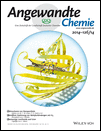Gas-Phase Peptide Structures Unraveled by Far-IR Spectroscopy: Combining IR-UV Ion-Dip Experiments with Born–Oppenheimer Molecular Dynamics Simulations†
We gratefully thank the FELIX staff for their skilful experimental support. This work was sponsored by NWO CW (VICI grant number 0724.011.002) and NWO-EW for the use of supercomputer facilities; we thank the staff at SURFSARA for support. This work was performed using HPC resources from GENCI-CINES (grant number 2012-13-082484). The stay of S.J. at the University of Evry was sponsored by FOM.
Abstract
Vibrational spectroscopy provides an important probe of the three-dimensional structures of peptides. With increasing size, these IR spectra become very complex and to extract structural information, comparison with theoretical spectra is essential. Harmonic DFT calculations have become a common workhorse for predicting vibrational frequencies of small neutral and ionized gaseous peptides.1 Although the far-IR region (<500 cm−1) may contain a wealth of structural information, as recognized in condensed phase studies,2 DFT often performs poorly in predicting the far-IR spectra of peptides. Here, Born–Oppenheimer molecular dynamics (BOMD) is applied to predict the far-IR signatures of two γ-turn peptides. Combining experiments and simulations, far-IR spectra can provide structural information on gas-phase peptides superior to that extracted from mid-IR and amide A features.




